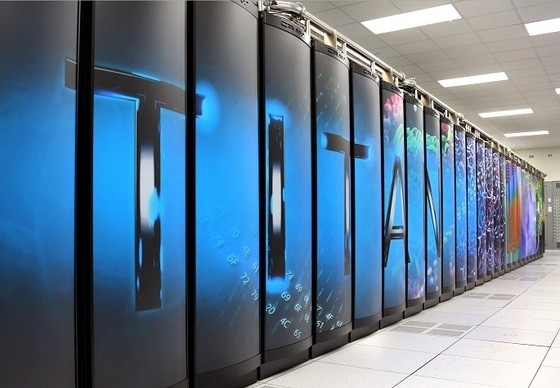The U.S. Department of Energy's Oak Ridge National Laboratory (ORNL) is now home to the world's fastest supercomputer, according to the latest Top500 list. Aptly dubbed Titan, the Cray-built system knocked off IBM's Sequoia after only six months in the top position, with a performance of 17.59 petaflops on the Linpack benchmark, or quadrillions of calculations per second, beating the previous record of 16.32 petaflops.
The new champion contains a whopping 710 terabytes of memory and 18,688 processing nodes between almost 300,000 AMD Opteron 6200 series cores and over 261,000 Nvidia K20x accelerator cores. Nvidia says the latter contributes up to 90% of the Titan's performance, highlighting how GPGPU technology is becoming increasingly important in the supercomputer and high-performance computing (HPC) segments.

All in all, 62 systems on the latest Top500 list use some sort of additional accelerator or coprocessor chip.
The massive supercomputer is as big as a basketball court and uses enough power to run a small town. It is 10 times faster than Jaguar, Oak Ridge's previous supercomputer, which held the record in 2009, and will be used by researchers for things like studying climate change, alternative fuels, and nuclear power simulation.
Other supercomputers on the list included Fujitsu's K computer at the RIKEN Advanced Institute for Computational Science in Japan, which held the crown until displaced in June by Sequoia. Two other IBM BlueGene/Q supercomputers rounded out the top five, while Dell's Stampede system equipped with Intel's Xeon Phi coprocessor ranked seventh, and China's Tianhe-1A took the eighth position.